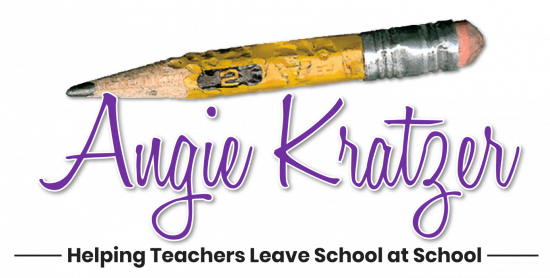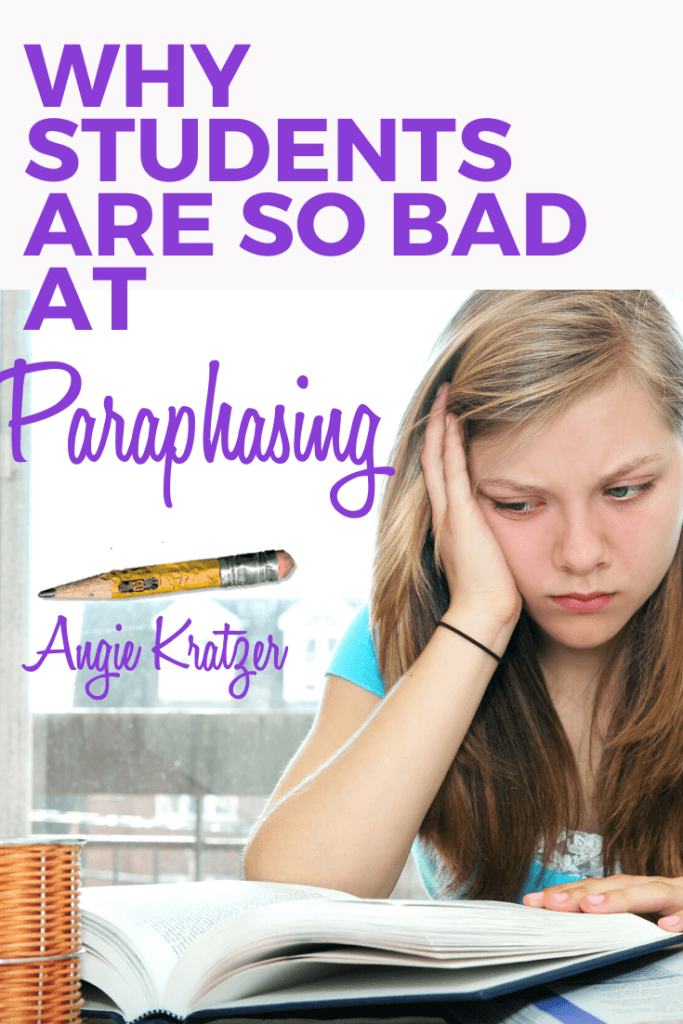As a side hustle, I train teachers in writing instruction. Over the past three weeks, I have worked with both middle and high school English teachers on synthesizing, and I’ve come to the conclusion that paraphrasing is the single most difficult skill to teach to secondary students.
In my last two workshops, I have given teachers a short paragraph to paraphrase right before lunch and evaluated their work while they were away. I gave this assignment after I had modeled how to do it and given them guided, shared, and independent practice.
About 30% of the teachers could paraphrase the passage. The TEACHERS struggled with it. Perhaps we’re getting to the root of the problem: We have a hard time teaching students to paraphrase because we don’t really know how to do it ourselves.
One EC teacher who works with several English classes at her high school told me that every one of the instructors teaches paraphrasing differently. That’s just in one building!
If this skill (or process, really) is so hard for teachers, that’s a pretty good indication that it’s going to be hard for our students. We might want to blame the grade levels below us, but I’m pretty sure those folks were teaching paraphrasing too. They just weren’t doing it effectively.
WHY IS PARAPHRASING SO HARD?
1. We have a hard time switching out of metaphorical language.
English is one long string of metaphors and idioms. I randomly went to CNN.com and grabbed a paragraph about a story on flooding in Venice, Italy just to illustrate this point. The metaphorical language is in bold.
Venice authorities have been warning the level of tourism is unsustainable. They floated ideas of introducing an entry charge and banning day trippers and huge cruise liners that cause environmental damage and spoil the views.
Here’s a painful, literal paraphrase of these sentences.
People who make decisions for other people within the city of Venice warn that there are too many tourists coming in to the city. The city does not have enough money to pay for the results of this tourism. These government officials think that they might make people pay to come in. They might also disallow people who come only for the day. They might also prevent large tourist ships from visiting because these large ships put pollutants into the air and water and keep people from being able to see beautiful things.
Here’s a second pass with a slightly less stilted version that uses replacement metaphors.
Government officials in Venice warn that the city cannot support the number of tourists coming in. They suggest an entry fee that would offset the cost of maintenance, and they want to discourage visitors who come for only one day. Officials may keep large, polluting, view-blocking cruise ships from docking as well.
2. We confuse it with summarizing.
A paraphrase should be the same length as the original and should include ALL ideas. A summary is much shorter than the original and includes only the main idea(s).
3. It requires A LOT of work.
I’m pretty good at this skill set, and it took me about ten minutes to come up with the second paraphrase above. Multiply that by a ten-page research paper, add an adolescent who would rather be gaming, and you have weak synthesis. In general, students want to do one of two things:
- Replace a few key words and call it a day.
- Reword phrasing until the product is a convoluted mass of awkward verbosity.
Ok, so we’re bad at it. Let’s get better.
Here are five rules for paraphrasing:
- Maintain the tone of the original piece. Tone is meaning, and if a student changes the tone, she or he changes the meaning. An objective, serious piece can’t be paraphrased with a sarcastic voice. Here’s a categorized list of tone words to help with identification.
- Maintain the point of view of the original piece. If the author wrote in first person, the paraphrase should be in first person. If the author wrote in third person, the paraphrase should be in third person. If the author—heaven forbid—wrote in second person, the paraphrase should do the same.
- Keep the author’s meaning—all of it. It’s fine to take out redundant material, but do not remove any details. This is not the time to filter or collapse. If the intent is to paraphrase, paraphrase.
- Make the paraphrase your own. A paraphrase is a digested, processed regurgitation of the original. The meaning is not yours. The tone is not yours. The STYLE is. It’s fine to move ideas around as long as you maintain the author’s intended meaning. There is a temptation to paraphrase word by word or even phrase by phrase, but the products of those endeavors will end up stilted. Experiment with digesting the material, putting it aside, and writing the paraphrase without reference to the original. Go back and tweak if necessary. (See what I did there with the switch to second person? It’s really ok.)
- Keep the length the same. For the people in the back: KEEP THE LENGTH THE SAME. This isn’t a summary. Don’t go crazy with word or sentence count, but do avoid removing ideas.
Ideas for Teaching Paraphrasing
- During the research process, do not let students start taking notes from sources until they have demonstrated proficiency in paraphrasing. They work with the same short paragraph over and over and over until they are good enough to move on.
- Let students experiment with bad paraphrasing. Give everyone the same sentence and instruct them to replace words only, change the meaning completely, make the sentence awkward, etc. Celebrate the worst one.
- Model your thinking. Chances are–even if you’re bad at it–that you’re the best synthesizer in the room. Let students hear your thought process as you paraphrase.
- Use analogies to help students understand what paraphrasing is and isn’t. Here are some analogy-based lesson plans on both paraphrasing and summarizing. This set of four lessons would work well to give students leverage for the next grade as well. Try them during the research process or after testing.

Want a little paraphrasing help?
Grab this student handout on the five laws of paraphrasing.


